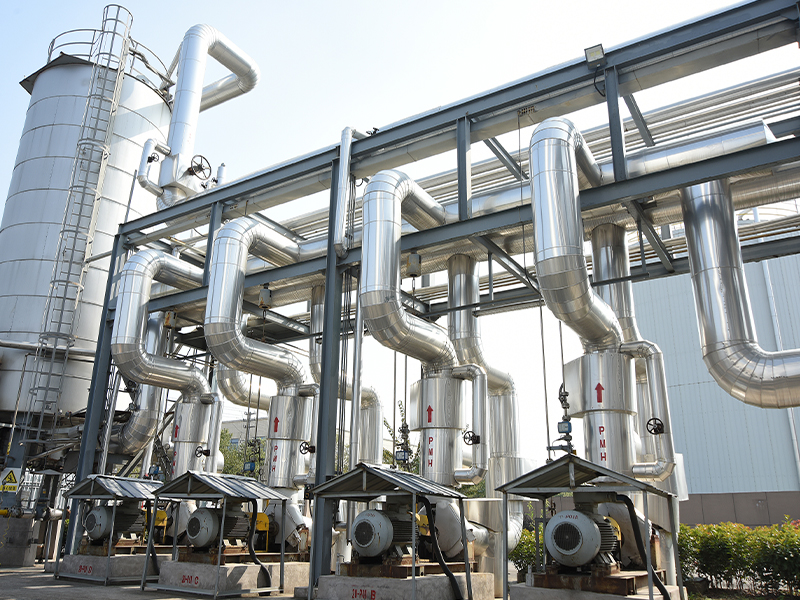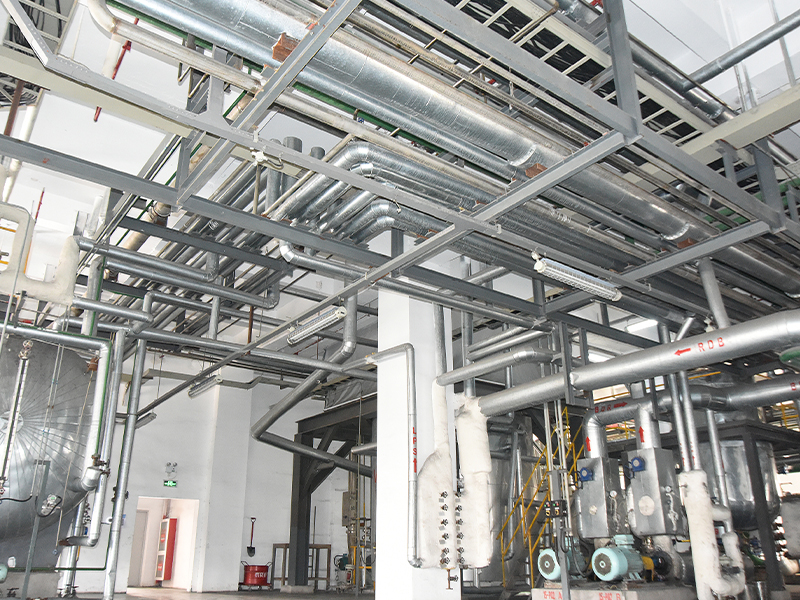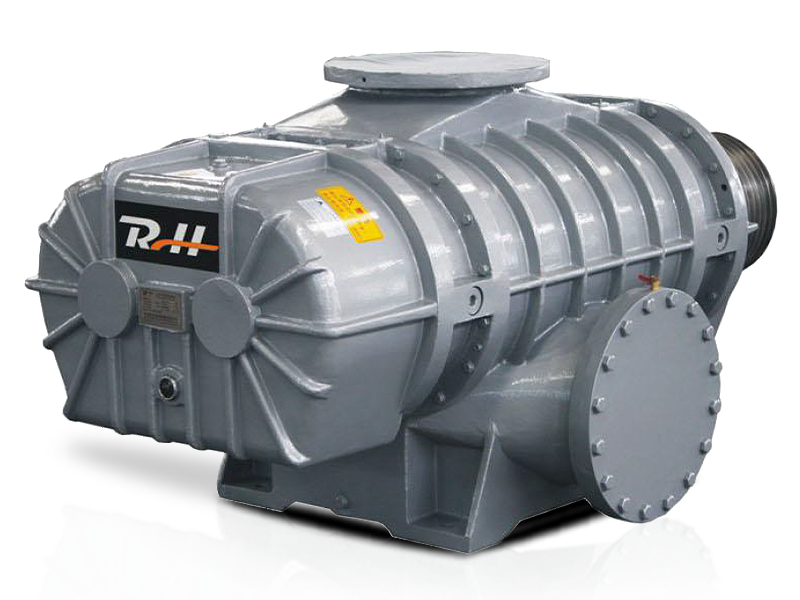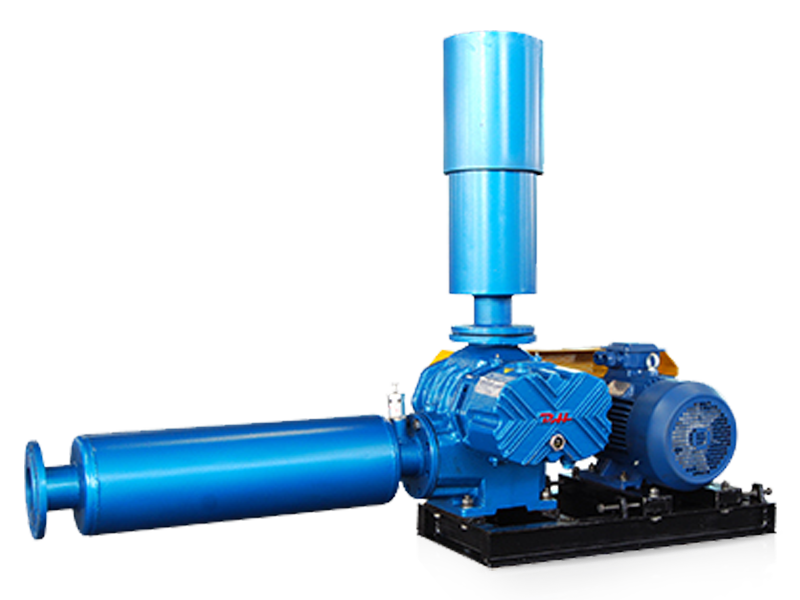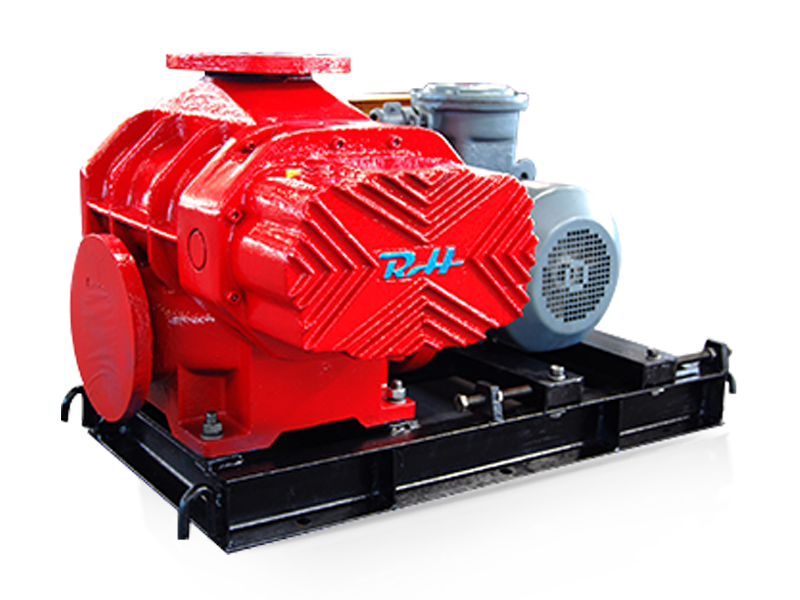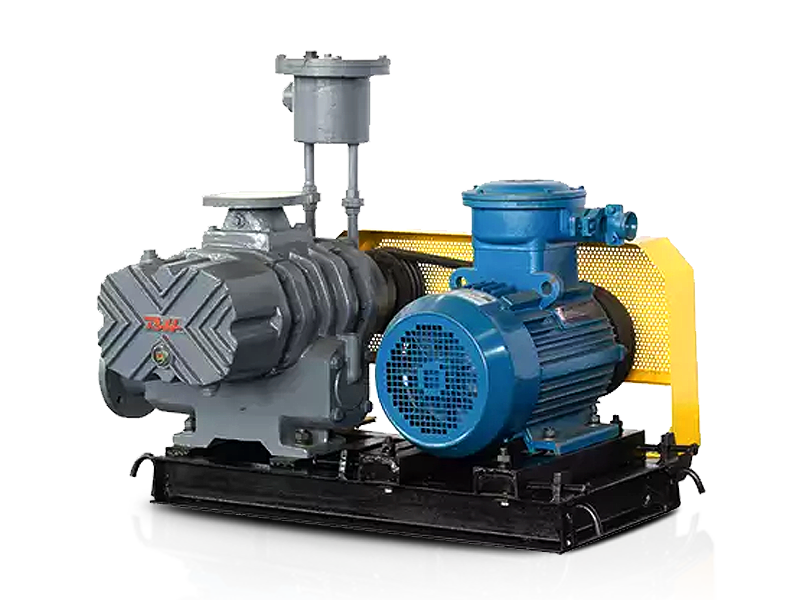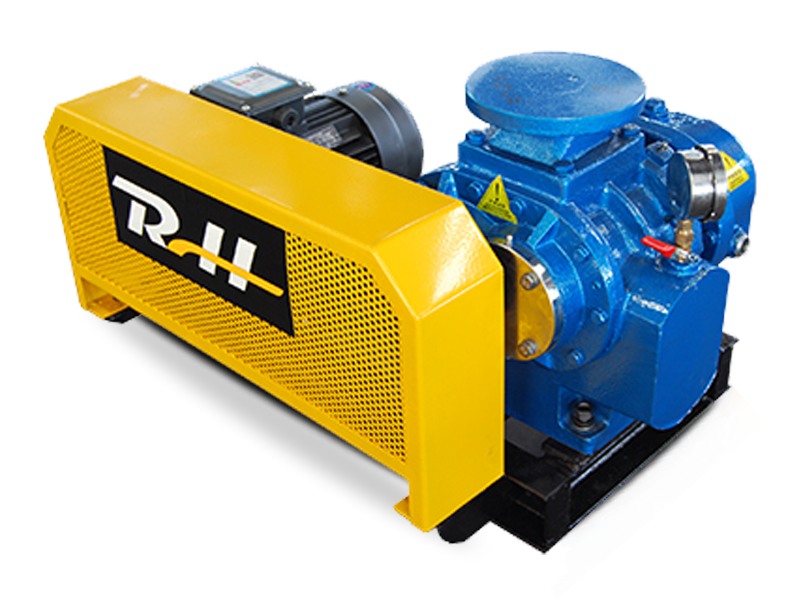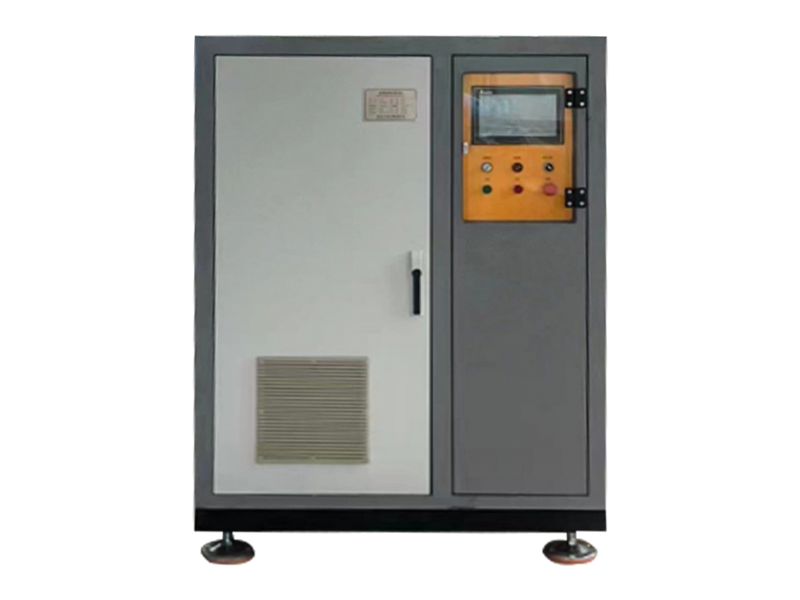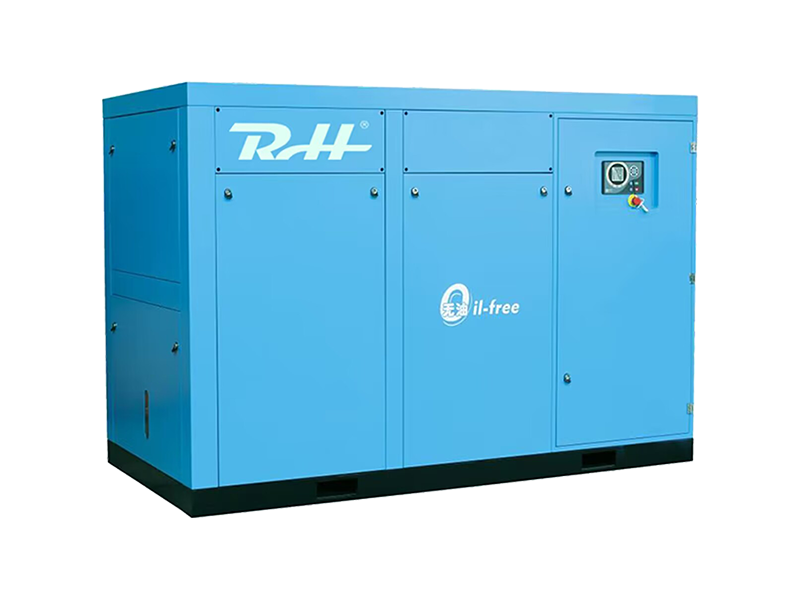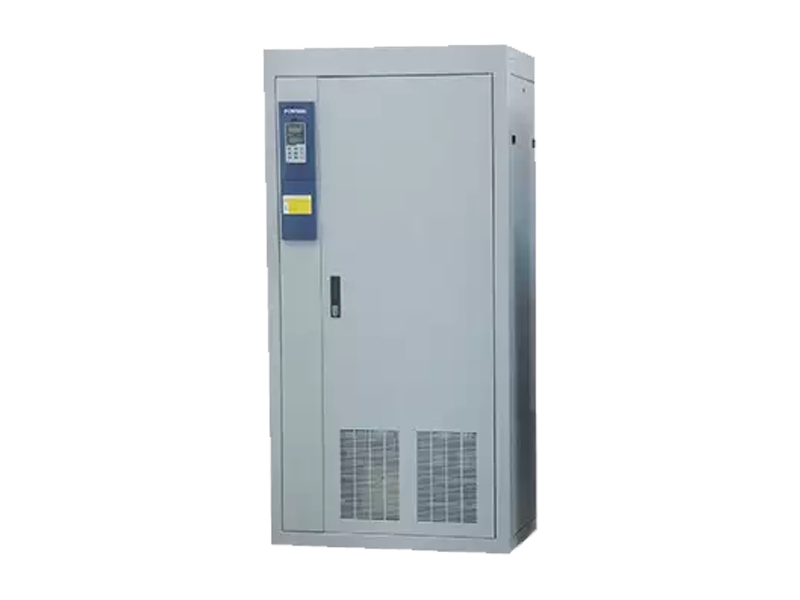Roots Blower (Lobe Blower)
Working Principle
Roots blowers operate using two meshing lobed rotors that rotate in opposite directions. As the rotors turn, air is trapped in the pockets between the rotors and the casing, then carried from the intake side to the exhaust side without internal compression. The compression occurs when the trapped air is forced against the backflow from the discharge side.
Key Characteristics
- Simple and robust design with few moving parts
- Non-contact rotating elements with clearance gaps
- Pulsating airflow due to the lobe design
- Higher noise levels compared to vane blowers
- Lower manufacturing and maintenance costs
- Constant volume flow regardless of pressure
Construction Details
Roots blowers feature two or three-lobe rotors made of cast iron or aluminum. The rotors are synchronized by timing gears to maintain precise clearance without touching each other or the casing. The housing is typically made of cast iron with precisely machined bores to maintain tight clearances.
Rotary Vane Blower
Working Principle
Vane blowers consist of a rotor with multiple sliding vanes mounted eccentrically in a cylindrical housing. As the rotor spins, centrifugal force pushes the vanes against the housing wall, creating sealed chambers. Air is drawn in, compressed as the chamber volume decreases, and discharged at higher pressure.
Key Characteristics
- Internal compression mechanism
- More efficient than roots blowers
- Lower noise and vibration levels
- Smoother airflow with less pulsation
- Require lubrication for vanes
- More complex design with more moving parts
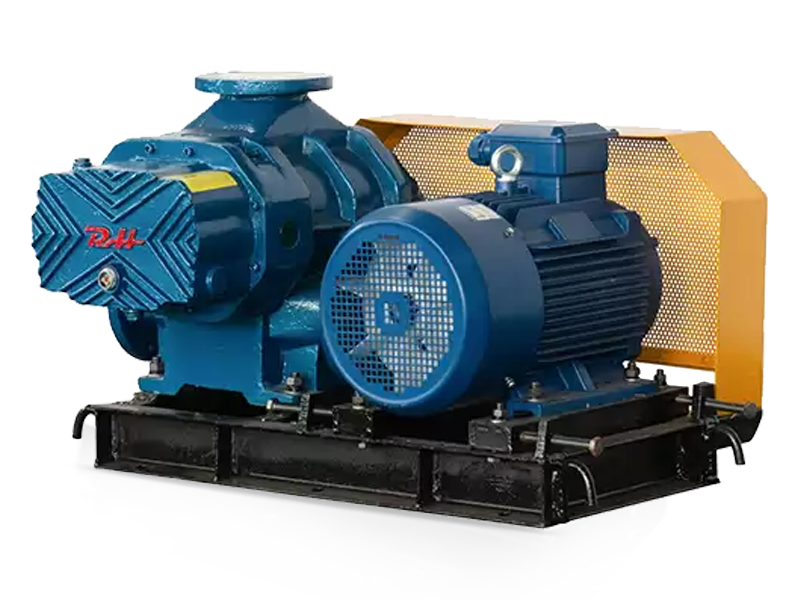
Construction Details
Vane blowers feature a rotor with slots that hold several vanes (typically 8-12). The vanes are made of composite materials or carbon and slide radially. The housing has an elliptical shape that creates the eccentricity needed for compression. Oil lubrication is required for vane movement and sealing.
| Parameter | Roots Blower | Vane Blower |
| Compression Method | External compression | Internal compression |
| Efficiency | Lower efficiency (40-50%) | Higher efficiency (50-65%) |
| Noise Level | Higher noise and vibration | Lower noise and vibration |
| Pulsation | Significant pulsation | Smooth airflow |
| Lubrication | Oil-free operation | Requires oil lubrication |
| Maintenance | Lower maintenance | Higher maintenance |
| Initial Cost | Lower initial cost | Higher initial cost |
| Operating Cost | Higher energy cost | Lower energy cost |
| Pressure Capability | Up to 1.0 bar | Up to 1.1 bar |
| Temperature Rise | Higher temperature rise | Lower temperature rise |
| Durability | More durable construction | Vane wear over time |
| Complexity | Simpler design | More complex design |
Roots Blower Applications
- Wastewater treatment aeration
- Pneumatic conveying systems
- Industrial vacuum systems
- Combustion air blowers
- Low-pressure gas boosting
- Filter press systems
- Aquaculture aeration
Vane Blower Applications
- Industrial vacuum cleaners
- Packaging machinery
- Medical and dental equipment
- Printing press systems
- Laboratory equipment
- Material handling systems
- Central vacuum systems
Selection Criteria
- Required pressure range
- Flow rate requirements
- Energy efficiency goals
- Noise level restrictions
- Oil-free operation needs
- Maintenance capabilities
- Initial budget constraints
- Space limitations


 русский
русский Español
Español عربى
عربى